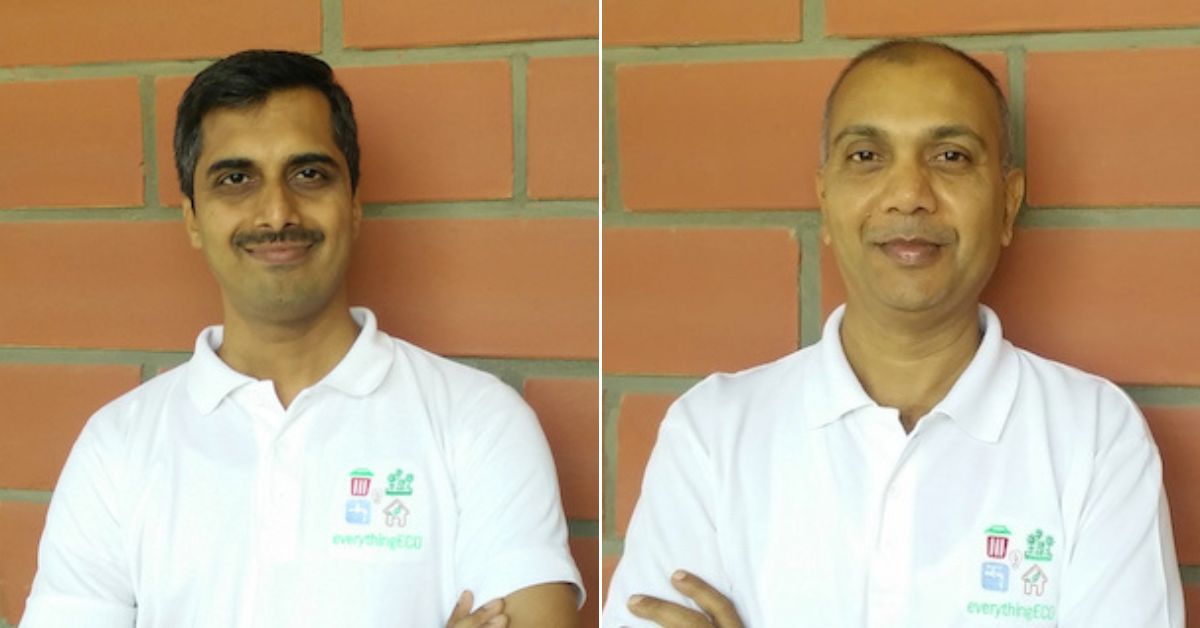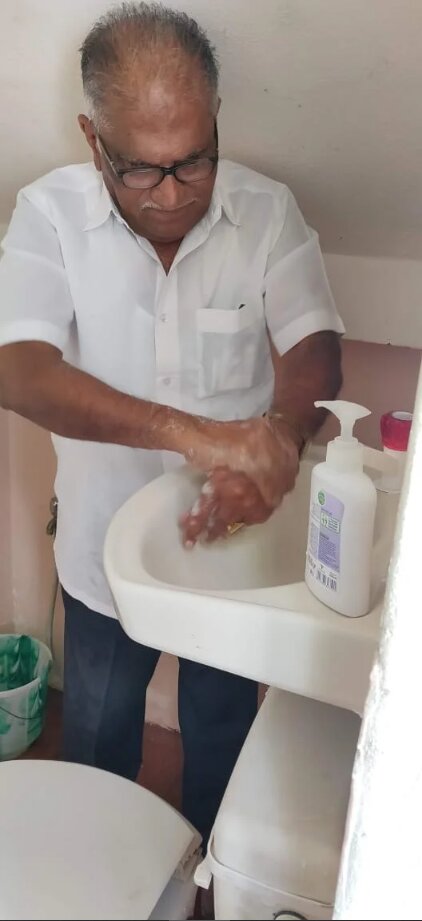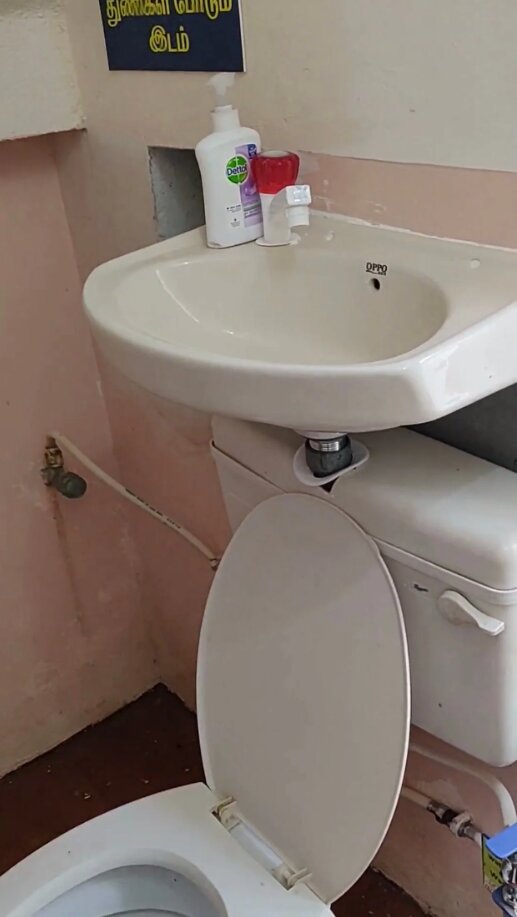(In Half 1 of this collection, we mentioned quite a lot of issues and options on a coverage stage about Bengaluru’s present water disaster, addressing points starting from state failure to reviving lakes, recharging the town’s groundwater, constructing open recharge wells, and utilizing handled wastewater as a real useful resource. Right here we’ll focus on what residents can do to assist!)
Regardless of problems with state capability and the necessity to recalibrate water coverage in Bengaluru, there’s a lot residents can do to mitigate the water shortage downside.
Talking to The Higher India, S Vishwanath, a civil engineer and concrete planner with greater than three a long time of expertise within the water and sanitation sector, says, “If I do rainwater harvesting, eat much less water, recycle greywater, and ensure to minimise my demand, then there may be some quantity of water which I can save inside my entire zone. And the administration can switch a few of my zone’s water to a different which is going through shortage.”
For these residing within the affected space, particularly in house complexes with 20 models or extra (which are mandated to have their wastewater therapy plant), Vishwanath believes that in the event that they guarantee that their wastewater therapy vegetation are working nicely, then they will fulfil all their non-potable water necessities from these programs.
“If residents do rainwater harvesting nicely, their borewells may have water. If the group works across the lakes of their neighbourhood, comes collectively, and makes positive that the lake is cleaned up and de-silted together with the State, then these water our bodies will be capable to obtain rainwater and recharge the aquifer. Within the meantime, the surplus water from their STPs which are nicely handled will be led into these lakes in order that it recharges the aquifers. I imagine these are all of the steps that residents need to take to guard the town’s water assets,” he recommends.
However what steps has he taken in his own residence to cut back water consumption?
“In addition to being conscious of the quantity of water you eat, you possibly can deploy applied sciences like aerators in your faucets or bathe heads. You guarantee that the water you gather after cleansing your dishes is used to water your vegetation or the backyard that you’ve,” he says.
“In my case, I make sure that all of the greywater is recycled. I make sure that to gather the wastewater from my washer and half-bucket bathtub water. I take advantage of eco-friendly soaps and detergents which don’t have phosphates and phthalates. Which means that the wastewater from bathing or washing garments can be utilized for swabbing the ground, watering the terrace backyard, and cleansing the automotive. I’ve a dry compost rest room which requires no water for the final 25 years. In fact, this may increasingly appear a bit excessive to some but it surely has labored for me,” he provides.
Vishwanath’s dwelling additionally has rainwater harvesting programs which are working optimally.
“Although the final rains within the metropolis have been in November, our 1,000-litre rain barrel nonetheless has sufficient water for our consuming and cooking wants until June. I’ve taken away vegetation which might have in any other case grown and left the backyard to be dry in order that when the rains come, I can restart my backyard. Proper now, I solely have drought-tolerant vegetation,” he shares.
“Additionally, I make sure that to make use of much less vitality (electrical energy). The much less vitality I take advantage of, the extra water you’re saving in some dam or thermal energy plant. You need to be conscious of the vitality you employ and concerning the meals you eat so that you don’t waste it. These are a few of the steps I’ve taken,” he explains.
‘How can I cut back my water consumption by 50%?’
One of many factors talked about by Vishwanath in decreasing his water consumption was the usage of aerators. It’s one of many easiest hacks you possibly can undertake in your house to cut back water consumption.
So, The Higher India spoke to Shashidhara Kumaraswamy, the co-founder of EverythingECO, a Bengaluru-based startup addressing the challenges of water and waste administration. Among the many merchandise EverythingECO manufactures are aerators which you could connect to washroom or kitchen faucets and restrictors for bathe heads and well being taps.
“Karunaprasada Kanavi and I began EverythingECO with a imaginative and prescient in 2016 to convey sustainability to companies and houses, addressing the challenges of water and waste administration. Earlier than moving into enterprise, we checked out how individuals and totally different companies have been utilizing water, what their every day consumption ranges have been, and began considering of customised options required for every of them,” says Shashidhara.

When Shashidhara and his co-founder did an in depth audit on water consumption ranges throughout a number of places in Bengaluru, they discovered that every enterprise or residential unit has particular necessities based mostly on its utilization sample. In sure places, they discovered the stream price measured in hand washing faucets to be round 15 to 16 litres per minute.
“Usually, we have now noticed that while you purchase faucets of normal fittings, their stream price is between 14 to 18 litres per minute based mostly on water stress. Most fixtures offered commercially don’t have any aerators. They arrive with filters to filter out the mud. These filters don’t do the job of water conservation, however solely make sure the laminar stream of water,” he informs.
Throughout this audit, they concluded that faucets for hand washing ought to by no means have a stream price of greater than 3 litres per minute. Equally, for kitchens, they understood that folks required a better stream price however no more than 6 to eight litres per minute. “In a really perfect situation, no faucet ought to have a stream price of greater than 6 litres a minute,” explains Shashidhara.
“Once we have a look at a number of use instances by way of hospitals, eating places, and bulk washing areas, their necessities are very totally different and never everybody can stay with spray faucets releasing 3 litres a minute. We began customized designs and options. Our firm does complete water audits for companies and supplies options for diverse sizes of faucets, addressing various forms of stream charges which are required, and implementing them end-to-end,” he provides.
Aerators manufactured by EverythingECO begin with stream charges (per minute) of 1 litre, 3 litres, 4 litres, and 6 litres. “Aerators with a stream price of 0.5 and 1 litre per minute normally supply a mist-type stream. However for business and residential flats, this stream price is just too low to clean palms. For hand wash faucets, our aerator which restricts stream charges to three litres a minute is well-liked throughout all sectors. Many individuals go for 3 litres a minute aerator for his or her kitchen faucets as nicely, as a result of it successfully covers a bigger space for laundry utensils. If clients need laminar stream of their kitchen faucets, then they go for 4 or 6 litres a minute aerators,” claims Shashidhara.
“Restrictors cut back the quantity of water that’s popping out from the pipes or the entry factors. You possibly can connect these restrictors to older sort faucets, well being taps and bathe heads and cut back the stream price to wherever between 6 to 9 litres a minute. Relying on the water stress of their bathe heads, individuals can use restrictors to restrict the stream price to six to 9 litres,” he provides.
Shashidhara notes that there are a few questions residents ought to reply if they’re severe about decreasing private water consumption.
1) What’s my every day consumption and the place do I take advantage of my water?
In different phrases, how a lot water do I take advantage of for laundry my palms, bathing, shaving, brushing, washing garments and utensils, and so forth?
2) Understanding why I take advantage of X quantity of water in a day.
For instance, if I’m utilizing 400 litres of water a day, do I want this a lot to stay nicely? “Basic residing requires 3 litres of consuming, 5 litres of cooking (per day) and the remainder we’re washing and flushing down the drain,” he says.
3) How do I cut back my every day water consumption by 50%?
“And you then implement options out there together with aerators, restrictors, and utilizing low-flush bathrooms. Taking a shorter bathe helps save water in comparison with a 20-minute bathe. Attaching a restrictor with a stream price of 6 litres to 7 litres per minute to an current bathe head will assist cut back water wastage by 50%,” he explains.
Having mentioned that, Shashidhara believes actual water financial savings come from a collective effort fairly than someone altering a single faucet.
“You additionally need to undertake a mechanism to cut back your utilisation. For instance, in case you set up an aerator in your kitchen faucet, however you might be washing utensils for an extended interval, you then’re not decreasing water consumption. It’s possible you’ll find yourself consuming extra water than earlier than. You might want to be cognizant of the way you’re going to make use of water and prohibit the quantity popping out from the faucets and bathe heads,” he provides.
“Within the metropolis, we have now 1 crore 40 lakh inhabitants, 150 litres of water consumption per individual per day is required,” mentioned Bangalore Water Provide & Sewerage Board (BWSSB) chairperson Dr V Ram Prasath Manohar, in accordance with a information report on 13 March 2024.
Certainly, we don’t have to make use of this a lot water on a given day and may discover methods to avoid wasting.

Standardisation of faucets
“One problem we have now noticed just lately is that a variety of faucet designs are altering. This is a crucial side I wish to spotlight,” explains Shashidhara.
“There’s a dire want for standardisation throughout the trade, builders, and Authorities on standardising fixtures backed by a score system for water conservation or effectivity. Until standardisation units in, new faucet designs will emerge and not one of the aerators will probably be appropriate. When that occurs, stream charges return to 16 litres/minute,” he provides.
In response to The Hindu in April 2023, the Union Authorities was bringing in a star score system for water fixtures much like the rankings {of electrical} home equipment. “The brand new score system would have 3, 4 and 5-star water fixtures based mostly on their water effectivity and this score system would come below one umbrella known as Bharat Faucet,” the report mentioned.
“Now we have now roped within the Indian Plumbing Affiliation and all producers to undertake and promote these requirements and herald water-efficient fixtures. Bharat Faucet is a collaborative effort which was formulated below AMRUT 2.0 to drive water effectivity, and this may be achieved provided that water shops are environment friendly, be it sanitary fixtures or faucets,” mentioned D Thara, Extra Secretary, MoHUA (Ministry of Housing and City Affairs) and Mission Director, AMRUT 2.0.
Since this report, nonetheless, there have been no information experiences of this initiative’s progress.
Saving toilet-flushing water
In addition to attaching aerators and restrictors in your house, one other step you possibly can take is to cut back the quantity of water you employ to flush bathrooms. In response to one estimate, the town is flushing out an unimaginable 486.5 million litres of water every day. Folks can set up a low-flush rest room, use non-potable handled water as a substitute of freshwater, or undertake hacks just like the one developed by Subburaman M — a septuagenarian and resident of Trichy, Tamil Nadu, who received a Padma Shri for bettering sanitation in rural areas.
Subburaman is the founding father of the Society for Neighborhood Organisation and Folks’s Schooling (SCOPE) — a non-profit which has put in 1.2 lakh bathrooms throughout India. In 2020, he developed a easy resolution in his dwelling that enables greywater generated from washing palms for use for flushing the bathroom as a substitute of recent water.

Talking to The Higher India in April 2021, he mentioned, “Through the lockdown interval, everybody began washing their palms usually to remain protected from coronavirus. Nevertheless, many didn’t take into consideration saving water whereas doing so. Some individuals even preserve the water working whereas lathering cleaning soap for 20 seconds. This results in huge wastage. So I began to think about methods we may reuse this water,” says Subburaman, including that he was impressed by an image of a Japanese rest room that had a washbasin built-in with a bathroom.
What Subburaman did was buy a brand new wash basin and match it proper on high of a Western-style rest room. Nevertheless, he says that an previous one will be eliminated and refitted too.
“The concept was to attach the basin to the bathroom’s flush tank. To take action, the exit pipe from the basin was inserted on high of the flush tank via a gap. The slicing work was executed with the assistance of a plumber,” mentioned Subburaman. As soon as the 2 have been fitted, they have been sealed in place, and the water connection was directed solely to the washbasin.
For the previous six months earlier than talking to The Higher India, he mentioned it was working completely and confronted no damages or leakages.
He even provided a five-step guide on how you are able to do the identical at your own home:
Step 1: With assist from a plumber, set up an previous/new washbasin on the wall over the bathroom’s flush tank.
Step 2: Create a gap, as huge because the outlet pipe, on the flush tank.
Step 3: As soon as the washbasin is mounted, insert the outlet pipe into the flush tank.
Step 4: Direct the water provide to the washbasin and switch off the valve resulting in the bathroom.
Step 5: Open the faucet and let the water run for a couple of seconds to verify for any leakages.
It takes as much as three or 4 hand washes to replenish the flush tank. To keep away from touching the faucet whereas washing palms, he additionally had a foot pedal put in which he says is optionally available.

Encouraging Bengaluru’s residents
There may be one factor the native administration — whether or not it’s the BBMP or the State Authorities — can do to encourage its residents to avoid wasting water as a substitute of constructing one other app. They’ll take inspiration from one of many many steps that the town of Cape City in South Africa took.
What did they do?
They printed an in depth water map of the town combining water utilization knowledge with homes colour-coded based mostly on how a lot water each was consuming. Solely these homes which hit water-consumption/saving targets set by the administration have been acknowledged. Metropolis directors knew which homes weren’t assembly their targets, however they created a map to not disgrace anybody however to recognise those who did meet their targets.
Because the City Sustainability Change famous in a well-liked case examine, “the Water Map skilled a few of the highest web site visitors ever skilled by a Metropolis of Cape City webpage.”
The examine went on so as to add, “It was broadly reported on within the native media and obtained a lot consideration on social media. The Water Map thus achieved substantial water conservation consciousness and is believed to have contributed to the dramatic reductions in home water use, which prevented the Metropolis from working out of water, the so-called ‘Day Zero’.”
(Edited by Pranita Bhat; Pictures courtesy Shutterstock/WESTOCK Productions/MudaCom)


